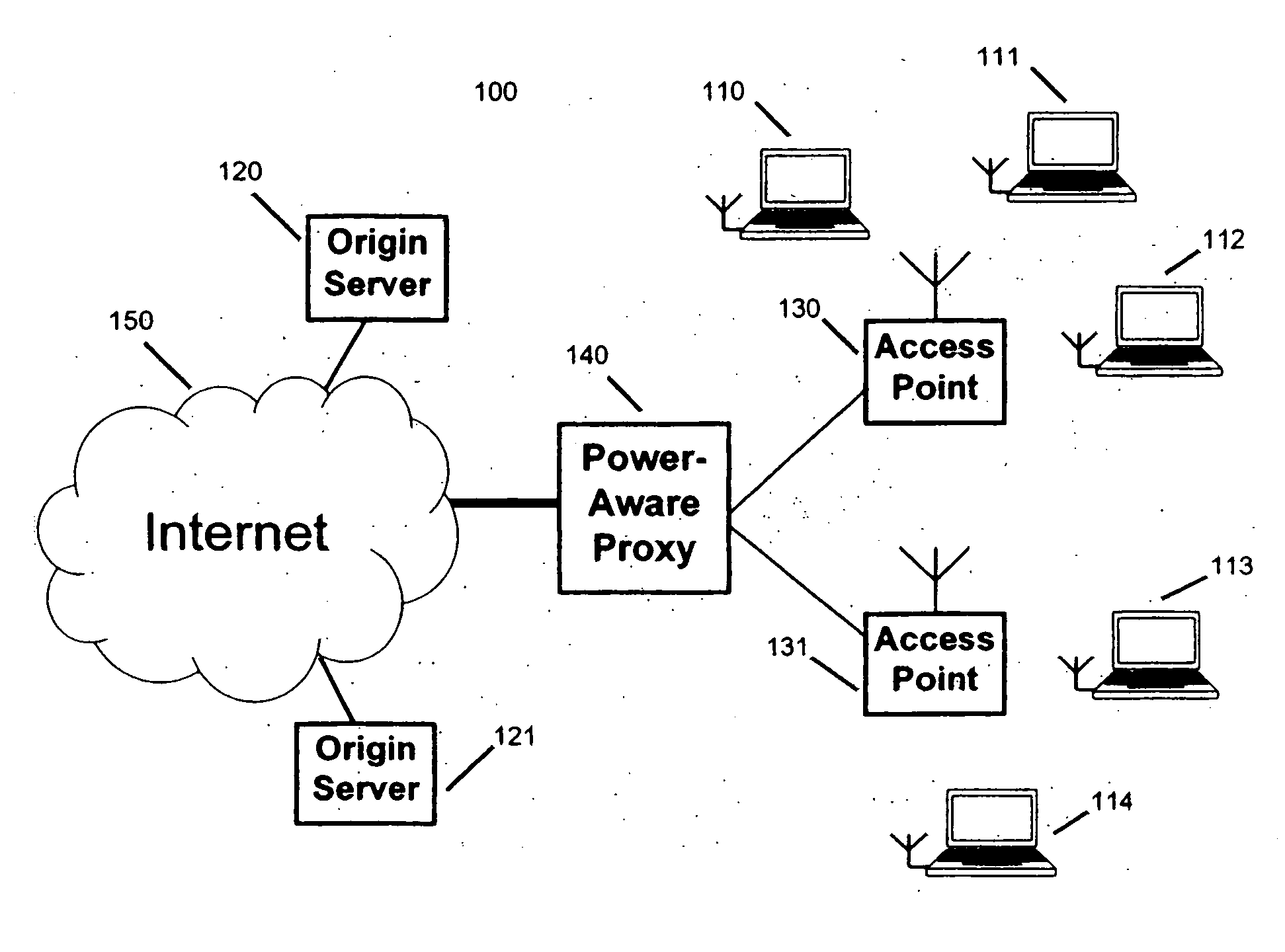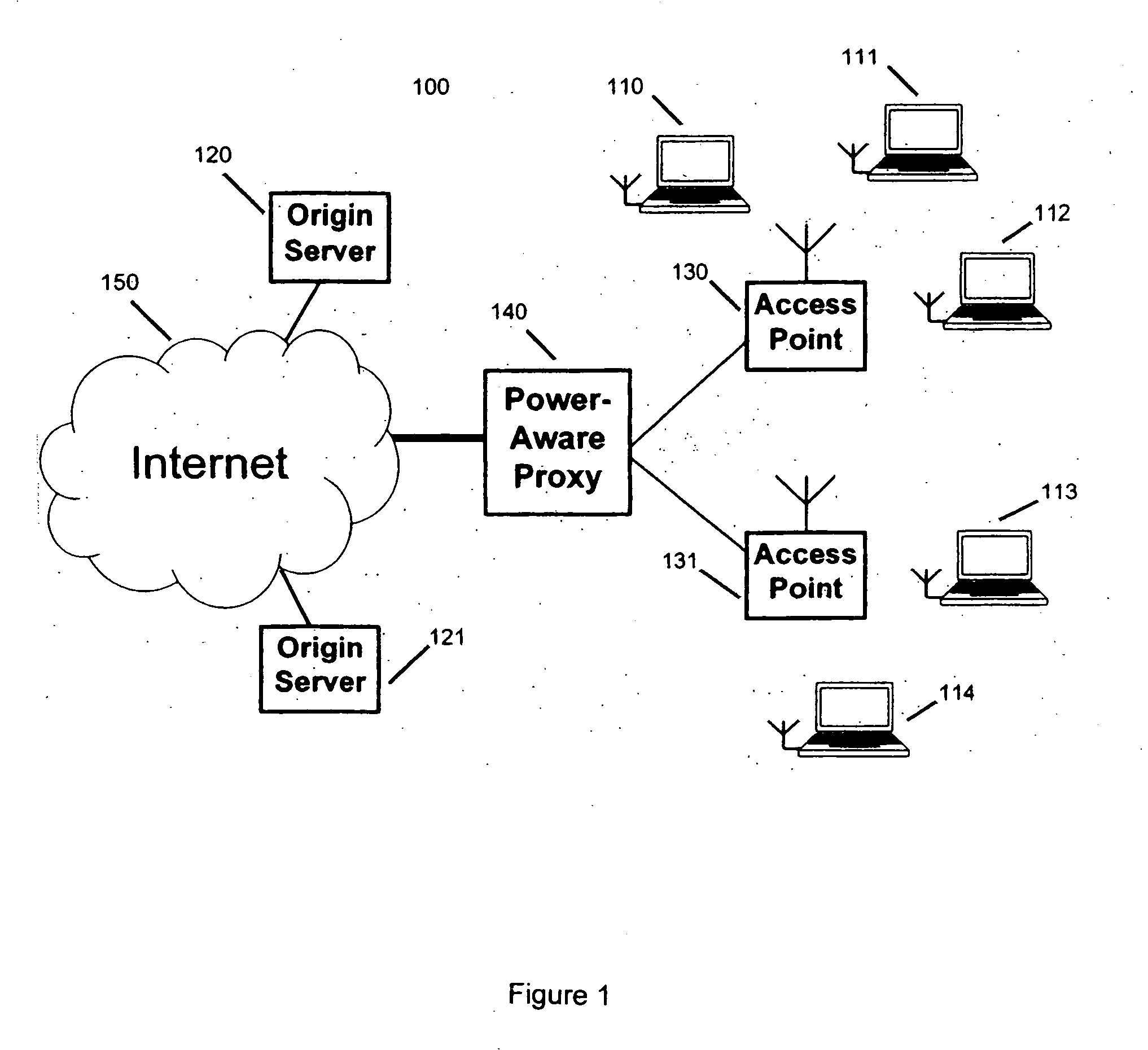Method and apparatus for remote discovery of client and access point settings in a wireless LAN
a wireless lan and access point technology, applied in the field of computer software, can solve the problems of reducing the energy consumption of mobile clients, power consumption, and the probability of getting a cache hit, and achieve the effect of simplifying the firewall configuration considerably
- Summary
- Abstract
- Description
- Claims
- Application Information
AI Technical Summary
Benefits of technology
Problems solved by technology
Method used
Image
Examples
Embodiment Construction
[0022]FIG. 1 illustrates a networking environment (100) in which wireless clients (110)-(114) communicate with origin servers (120)-(121) through a variety of network components such as wireless access points (130) and (131), a power-aware proxy server (140) and the Internet (150). The proxy (140) is a remote network connected computer which supports client applications and schedules incoming Internet traffic for the wireless clients (110)-(114).
[0023] As may be seen from FIG. 1, the power-aware proxy (140), which in this case accepts or provides content from or to the internet (150), is in communication with one or more wireless access points (130) and (131) and which themselves are in communication with various wireless clients (110)-(114).
[0024] In the following, the term proxy is used to represent any remote network connected computer, except the client itself.
[0025] By way of an illustrative and non-restrictive example, an application addressed herein uses the popular 802.11...
PUM
 Login to View More
Login to View More Abstract
Description
Claims
Application Information
 Login to View More
Login to View More - R&D
- Intellectual Property
- Life Sciences
- Materials
- Tech Scout
- Unparalleled Data Quality
- Higher Quality Content
- 60% Fewer Hallucinations
Browse by: Latest US Patents, China's latest patents, Technical Efficacy Thesaurus, Application Domain, Technology Topic, Popular Technical Reports.
© 2025 PatSnap. All rights reserved.Legal|Privacy policy|Modern Slavery Act Transparency Statement|Sitemap|About US| Contact US: help@patsnap.com



